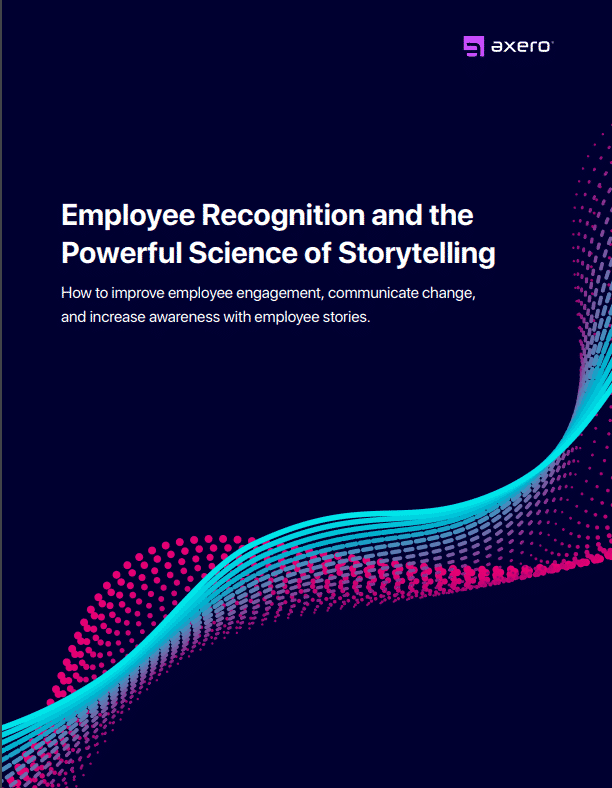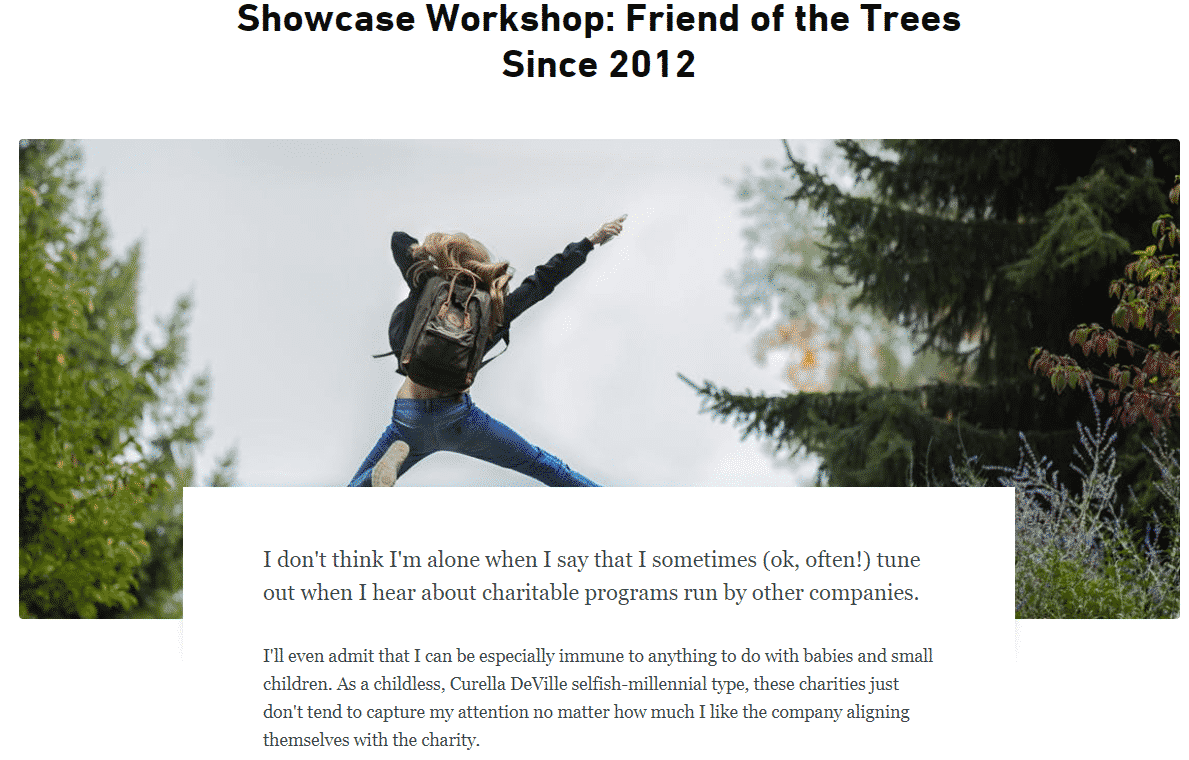I’m very big on relationships.
Not just the relationships in my personal life (although those are very important to me), but relationships in the business world.
You see, I’ve seen how good relationships can directly improve a company’s bottom line. How conversion from lead to customer — especially in the B2B space — is often based on the relationship a company has built with a prospect.
That’s why I’m on a mission to help my clients build relationships with their leads and customers through high quality content.
To be clear, I’m not just talking about hard-hitting marketing and sales material (although your marketing department may certainly be leading this effort).
I’m talking about content that serves your audience, content that helps them solve a problem without necessarily asking for a sale.
I’ve been working with the companies in the B2B tech and software space for nearly 20 years now, and I can tell you that good, helpful content goes a very long way in building a relationship with your prospect.
But it doesn’t happen overnight. And it doesn’t have to be all business, either. Content should be helpful, yes, but it can also be a little bit more than that.
Content can also show your audience the human side of your business — and spur real, person-to-person conversation, too.
Relationships Are Everything
Ever wonder why so many B2C brands spend all that money to build “brand loyalty?” Because loyalty implies a relationship. They want to establish a relationship with their consumers.
Or how about any service provider you do business with on a subscription basis? If you’ve ever tried to cancel a subscription or switch service providers, I bet you’ve been transferred to a Customer Retention Representative before they let you pull the plug.
And what does that Customer Retention Specialist do? They try to make you feel special. They tell you how much they appreciate your business, offer a bonus if you’ll just stick around, beg you to reconsider.
They try to make you think you have a relationship with them.
Honestly, sometimes it gets so awkward, it feels like you’re actually breaking up with someone!
But the mistake so many of these businesses make is that they don’t try to build a relationship with you from the beginning.
In today’s world, we’re spoiled for choice. Companies are vying for our business and the barrier to switching to a competitor is often pretty low.
The same is true for your prospects and customers too.
You need to give them a reason to choose you, and to keep choosing you.
This is why so many companies have created Customer Success teams: By providing personalized support to their new customers, they’re establishing a relationship. They know that preventing customer churn is just as important as brining new customers in (if not more important).
In the B2B space, the stakes can be even higher. The sales cycle is longer, so you have to invest a lot of effort to nurture your leads and stay top-of-mind as they consider their options (and your solution).
But remember those Customer Retention Specialists who try to make you feel like a rock star only after you’ve already bought from the company. This relationship-building effort can’t come out of left field. Building that relationship before they become your customer, before they’ve committed to your solution, is a critical part of success in B2B today — especially for large and enterprise companies.
How do you do this?
How do you get and keep their attention, and make them feel like you’re The One?
With high quality, targeted content.
Getting Personal to Stand Out
Competition is pretty fierce in almost every industry. And savvy businesses are already well into the content marketing game.
They know that valuable content builds authority and trust.
Audience expectations have risen too. According to the Havas Group’s 2017 Meaningful Brands report, 84% of people expect brands to provide content that entertains, tells stories, provides solutions, and creates experiences — but 60% of content is failing to deliver.
Something’s not right.
Now, to be fair, content shock is a real thing. Companies have rightly jumped on the content marketing bandwagon but haven’t necessarily been thoughtful or strategic about it. They just churn out post after post and listicle after listicle in the hopes of being “found” on Google.
I’ve written before about how SEO is a long game, so I won’t repeat myself here.
But I do want to talk about how you can rise above all that noise.
Quality content written with a deep understanding of the target audience helps you stand out from your competitors, and draws attention to your solution from the right people at the right time. Your content needs to be helpful, of course — but there’s something else too.
Your content should also have a human dimension.
The Human Side of Content
Humans want to feel like they’re interacting with other humans — not just bots or automations — before they’ll consider a relationship. So it stands to reason that any business that wants to build a relationship with its audience would do well to show a human side in the content they produce for that audience.
Let me give you some examples.
One of my long-time clients is a company that offers a collaborative intranet platform. And while they do provide a ton of free educational resources related to intranet implementation, that’s not what the CEO usually talks about on the blog.
In fact, they create a lot more human content than many other B2B companies — especially content related to employee engagement (a personal passion of the company’s CEO). So alongside an e-book on why a company needs an intranet, they also offer an e-book on employee recognition and the science of storytelling.

They also use their blog to provide a lot of thoughtful content about how leaders can make their workplace the best place for their employees, and how employees can grow their careers.
All this content recognizes that there’s more to their audience than just the business problems they need to solve.
Two clients of mine who offer enterprise database and analytics solutions also remain thoughtful about the bigger issues their clients are facing. These companies have put resources into deeply understanding their target customers — interviewing them, surveying them, spending time with them. So in the emails I write for these companies (nurture sequences, email blasts and newsletters), we always start out by offering insight into and solutions around the issues we know these customers face in their day-to-day lives. Long before we start talking about the product, we’re talking about the customer’s world.
Showcase Workshop is another example. They sell a content management and presentation app for sales enablement and provide helpful content to their audience as part of their marketing strategy. Their blog is chock-full of helpful posts about how sales professionals can do their job better, as is some of their longer-form content (like this white paper on how to nail a sale).
But they do more than just talk about business. They also share content about some of their own initiatives. For example, this post talks about why their CEO decided to make trees a charitable priority for the company by supporting an initiative called Trees That Count.

By sharing this information with their audience, they were able to put a human face on their company. They’re telling the audience something about themselves. They’re starting a conversation.
Content Is a Relationship Builder
Content is part of the audience experience with your brand. It can humanize your company and start a conversation. It can start and build a relationship.
Strong relationships are critical in any industry, and have a huge impact on profitability and growth.
After all, what do you do when a company you do business with makes you feel heard and understood?
You talk about them. You tell your friends and colleagues. You buy more from them.
And one of the best ways to make your audience feel understood is to make sure you understand them — deeply. Create a story for them that resonates and that they want to finish.
As that line from Casablanca goes, “I think this is the beginning of a beautiful friendship”.
